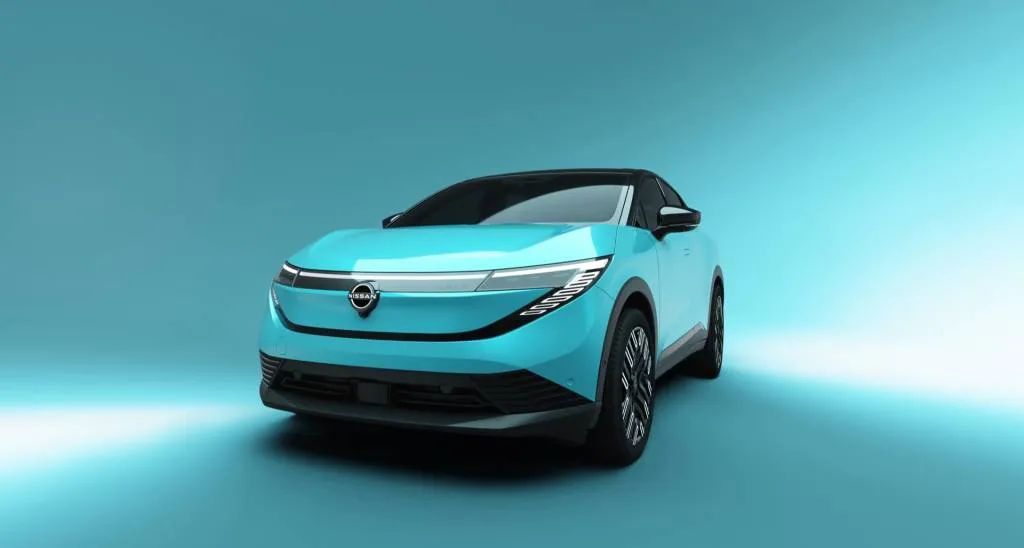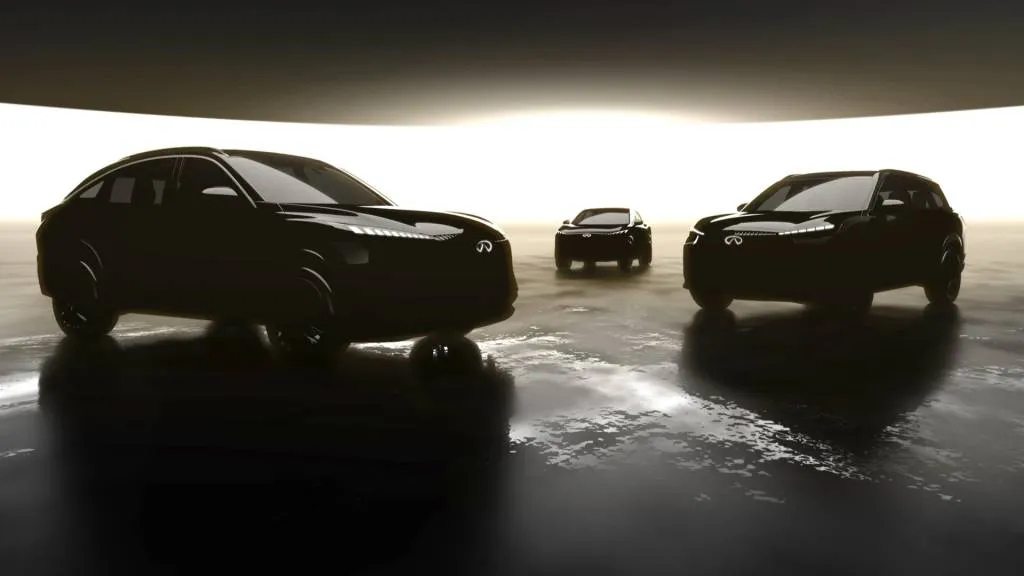Author: EVAI
2025 FIAT 500e
 What the 2025 FIAT 500e Does Right Fashionable Design and Urban-Friendly Size The 2025 FIAT 500e stands out with its retro-inspired styling that pays homage to the original Fiat 500. Its circular headlights, rounded rear end, and grille-less front give it a distinctive look that’s both charming and modern. Despite its advanced electric…
What the 2025 FIAT 500e Does Right Fashionable Design and Urban-Friendly Size The 2025 FIAT 500e stands out with its retro-inspired styling that pays homage to the original Fiat 500. Its circular headlights, rounded rear end, and grille-less front give it a distinctive look that’s both charming and modern. Despite its advanced electric…
2025 Tesla Model S
 What the 2025 Tesla Model S Does Right Blistering Performance The 2025 Tesla Model S continues to deliver supercar-level performance in a luxury sedan package. The base All-Wheel Drive trim features dual electric motors producing 670 horsepower, allowing it to sprint from 0 to 60 mph in just 3.1 seconds. For those who crave even more power, the…
What the 2025 Tesla Model S Does Right Blistering Performance The 2025 Tesla Model S continues to deliver supercar-level performance in a luxury sedan package. The base All-Wheel Drive trim features dual electric motors producing 670 horsepower, allowing it to sprint from 0 to 60 mph in just 3.1 seconds. For those who crave even more power, the…
2025 Tesla Model X
 What the 2025 Tesla Model X Does Right Blistering Performance The 2025 Tesla Model X continues to deliver astonishing performance for a midsize SUV. The base All-Wheel Drive trim features dual electric motors producing 670 horsepower, allowing it to sprint from 0 to 60 mph in just 3.8 seconds. For those who crave even more power, the Plaid trim…
What the 2025 Tesla Model X Does Right Blistering Performance The 2025 Tesla Model X continues to deliver astonishing performance for a midsize SUV. The base All-Wheel Drive trim features dual electric motors producing 670 horsepower, allowing it to sprint from 0 to 60 mph in just 3.8 seconds. For those who crave even more power, the Plaid trim…
New plug-in hybrids for 2025
 Are plug-in hybrids an on-ramp to fully electric vehicles, or undue cost and complexity? Are they something consumers asked for, or something created by bureaucrats and regulators? At least in some respects the answer includes all of the above. It’s complicated. Plug-in hybrids’ greater complexity is intended to pay off by greening the…
Are plug-in hybrids an on-ramp to fully electric vehicles, or undue cost and complexity? Are they something consumers asked for, or something created by bureaucrats and regulators? At least in some respects the answer includes all of the above. It’s complicated. Plug-in hybrids’ greater complexity is intended to pay off by greening the…
Review: 2025 Cadillac Escalade IQ gets smart, with batteries
 What’s in a name? The Escalade IQ is smarter, it turns out A big battery delivers 460 miles of range Cadillac delivers a big price, too: $129,990 For all its red-carpet appearances and secret-service duties over the past generation, the Cadillac Escalade has not been particularly cutting edge. It’s prospered in a prosperous world where…
What’s in a name? The Escalade IQ is smarter, it turns out A big battery delivers 460 miles of range Cadillac delivers a big price, too: $129,990 For all its red-carpet appearances and secret-service duties over the past generation, the Cadillac Escalade has not been particularly cutting edge. It’s prospered in a prosperous world where…
Hyundai Santa Fe Hybrid: How we’d equip our Best Car To Buy 2025 winner
 Santa Fe Hybrid strikes the best value in base SEL trim with AWD for $40,975 It’s only $500 more than a similarly-equipped gas-only model But second-row captain’s chairs only come with the top Calligraphy model One strong reason the Hyundai Santa Fe Hybrid won our Best Car To Buy 2025 award was because of its value. Sure, its boxy Land…
Santa Fe Hybrid strikes the best value in base SEL trim with AWD for $40,975 It’s only $500 more than a similarly-equipped gas-only model But second-row captain’s chairs only come with the top Calligraphy model One strong reason the Hyundai Santa Fe Hybrid won our Best Car To Buy 2025 award was because of its value. Sure, its boxy Land…
Review: 2025 Ram Power Wagon and Rebel HD defend their mountain
 Mild design tweaks don’t change the off-road Ram trucks’ capabilities Ram Power Wagon still has no direct competitor 2025 Ram Power Wagon costs $74,235 and Rebel HD costs $70,740 The competition woke up and realized there’s room to play in the heavy-duty off-road sandbox. But Ram doesn’t want to give an inch of a segment it has defined…
Mild design tweaks don’t change the off-road Ram trucks’ capabilities Ram Power Wagon still has no direct competitor 2025 Ram Power Wagon costs $74,235 and Rebel HD costs $70,740 The competition woke up and realized there’s room to play in the heavy-duty off-road sandbox. But Ram doesn’t want to give an inch of a segment it has defined…
Could Jeep reinvent planetary hybrid tech for 4WD adventures?
 Stellantis may be looking to adapt planetary gear hybrid systems—like the one currently used in the Chrysler Pacifica Hybrid plug-in hybrid minivan—to more rugged vehicles, a patent filing indicates. The Pacifica Hybrid uses a planetary power-split system to juggle its 3.6-liter V-6 and a pair of electric motors, which can both be used…
Stellantis may be looking to adapt planetary gear hybrid systems—like the one currently used in the Chrysler Pacifica Hybrid plug-in hybrid minivan—to more rugged vehicles, a patent filing indicates. The Pacifica Hybrid uses a planetary power-split system to juggle its 3.6-liter V-6 and a pair of electric motors, which can both be used…
Hyundai Santa Fe Hybrid: Best Car To Buy 2025
 The Santa Fe gains hybrid power, 36 mpg combined It outdoes the Toyota Highlander Hybrid and Kia Sorento, and looks like a Land Rover The Hybrid model costs only $500 more than the gas-only Santa Fe A three-row crossover SUV with a hybrid powertrain may be nothing new, but packaged with a blocky Land Rover look and an interior that puts the…
The Santa Fe gains hybrid power, 36 mpg combined It outdoes the Toyota Highlander Hybrid and Kia Sorento, and looks like a Land Rover The Hybrid model costs only $500 more than the gas-only Santa Fe A three-row crossover SUV with a hybrid powertrain may be nothing new, but packaged with a blocky Land Rover look and an interior that puts the…

2026 Nissan Leaf details: Affordable EV will face 2026 Chevy Bolt EV
- Next-generation Nissan Leaf will launch first in U.S. and Canada, be fully revealed this year
- Rogue Hybrid and Rogue PHEV are on the way over the next two model years
- A broader range of U.S.-made Nissan and Infiniti EVs starts to arrive in 2028
Affordable EVs? Widely available hybrids? A plug-in hybrid? As it emerges from financial upheaval, Nissan on Monday announced several intriguing product surprises relating to the North American market that altogether may bring a breath of fresh air to its U.S. lineup. .
Firstly, the Leaf is definitely U.S.-bound, and it’s coming here first. Nissan confirmed that the next-gen Nissan Leaf will launch initially in the U.S. and Canada—actually before Japan, and before Europe. It’s due to be fully revealed this year, but it and a 2026 Nissan Rogue plug-in hybrid, which will use a version of the system in the Mitsubishi Outlander PHEV, will arrive in fiscal year 2025, meaning later in 2025 or by March 31, 2026.
The timing announcement came at the same time as a first teaser photo of the next-generation Leaf. As anticipated it shifts to a more elevated seating position and a more crossover-like profile, closely cribbing the 2021 Chill-Out concept that Nissan itself said from the start was a hint of the next Leaf. Nissan more recently teased that the Leaf gets a Tesla NACS port in U.S. form, too.

2026 Nissan Leaf teaser
Nissan has also said that the next Leaf will be liquid-cooled and load up on some of the technology from the excellent Ariya, and be more competitive in range and efficiency. With that, plus its stylish new look and what we have to assume will remain an attractive price, it will arrive just in time to take on the next-generation 2026 Chevy Bolt EV—which will shift to LFP batteries and, as a GM executive boasted last year, will be the most affordable U.S. EV. As of GM’s last update, the Bolt EV is also due later this year.
In the same timeframe, by early 2026, Nissan will launch a new generation of its Sentra compact sedan, as well as a refreshed Pathfinder SUV. It hasn’t yet said if hybrid powertrains are in the works for either of these models.
Then in fiscal year 2026—meaning by March 31, 2027—Nissan will start making a completely new generation of the Rogue for the U.S. and Canada. This one will not only continue to take advantage of the plug-in hybrid powertrain in some versions of the Rogue but also, as it promised earlier this month, finally take advantage of Nissan’s e-Power series hybrid tech in other Rogue versions.
Given previous remarks from Nissan executives, Green Car Reports expects the Rogue Hybrid to be a widely available volume model in the lineup, not a niche offering.

Future Infiniti U.S. EV lineup
In early calendar year 2028 Nissan is expected to ramp up production of “an adventure-focused SUV”—at its Canton, Mississippi, plant, with an Infiniti electric SUV following later that year. Nissan notes that the Infiniti EV will be inspired by its Vision QXe concept that made its debut just before the 2023 Tokyo auto show and premiered a new Artistry in Motion design direction. At that time Infiniti said that the low-set QXe previewed a “sleek sedan” set to be made at Canton, so it’s unclear whether that’s still on the way or replaced by an SUV.









